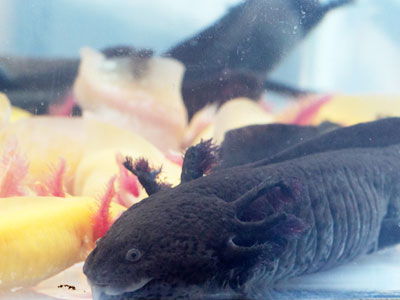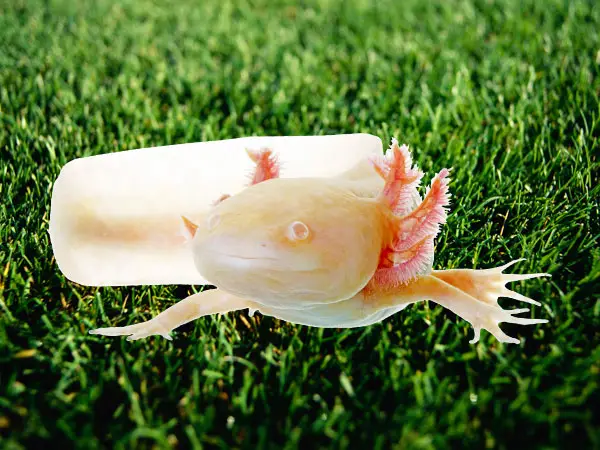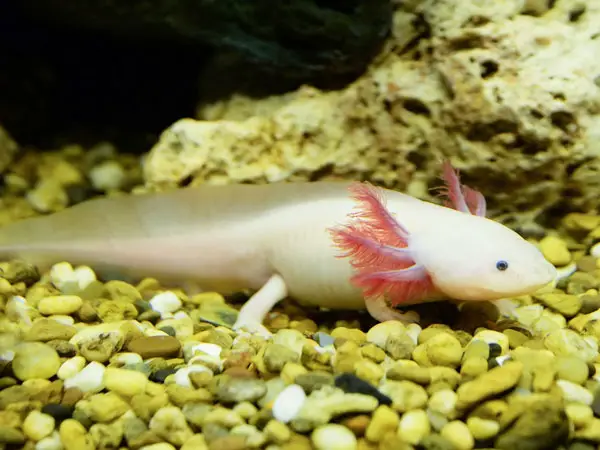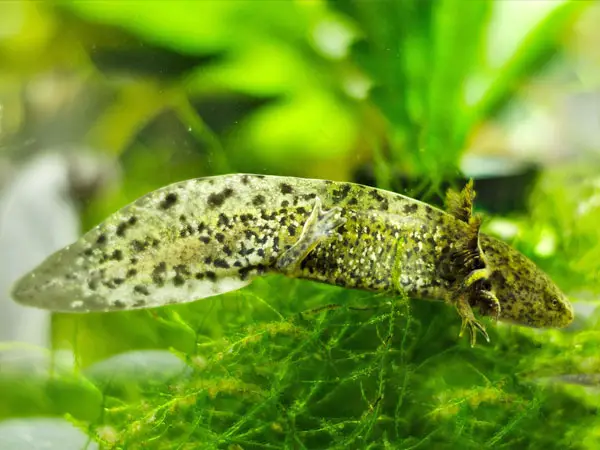Axolotls can regrow many of their organs, including their limbs. Their regenerative abilities are amazing to say the least and they have incredibly stable cells as well.
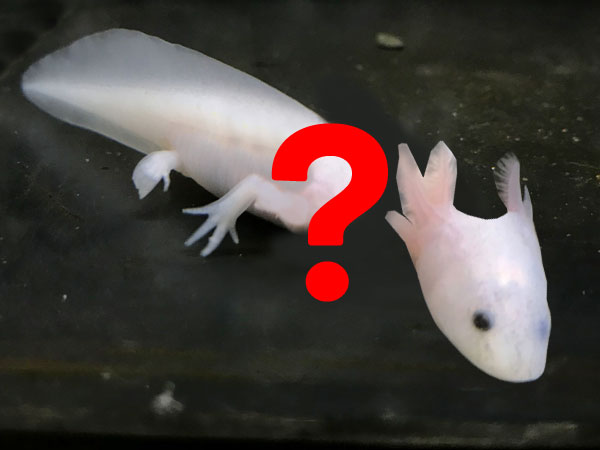
If they have any scars on their head, then those will be healed in a rapid rate for sure.
Unfortunately, axolotls can not regrow their head, because the brain controls the regeneration process through the nervous system. Losing their head, the brain will not be able to communicate with the organs and the regeneration will not happen.
Axolotls are able to regenerate some part of their brain and body, but with a severely damaged brain or nervous system the regeneration will not work.
Nevertheless, their regenerative abilities are still amazing. Scientists are trying to understand how these salamanders can regenerate parts of their brain and their entire limbs.
They can lose their whole arm and it will regrow without any issue.
An Axolotl can lose a third of its heart, its testes and its spine can be crushed as well.
Those all come back in their original shape after the regeneration process. For us, humans, a tiny blockage in our vessel can cause so much damage that it can become fatal.
But how exactly does this regenerative process work? This is what we currently know about it:
How do Axolotls Regrow their Body Parts?
Axolotls have the ability to selectively regenerate parts of their body. Their ability to repair their own brain is amazing.
It is also the only vertebrate and terrestrial animal that can completely regrow its own limb. They are able to regenerate their arm from the wrist and even a full arm after it’s lost.
The interesting thing behind their breathtaking regenerative abilities is that their body reacts to injuries in a different way than ours.
Our body simply covers the injured part with a skin tissue. Axolotls, on the other hand, start to transform their cells into stem cells.
These cells then help rebuild veins, skin and bones into their previous state. It is still a huge mystery to scientists why our body reacts so differently to injuries. The reason behind it is that the cells of a salamander are entirely different.
There is still a lot to learn about these regenerative processes, but at least scientists now have all the molecular tools and the sequence genome for it.
The ultimate goal is to be able to regrow human organs and save people who are severely injured.
For this to happen, however, scientists need to become intimately familiar with the whole process.
Can Axolotls Regenerate their Spinal Cord?
In case the spinal cord of an Axolotl is crushed, he is going to regenerate it within three weeks without any issue.
It is going to be completely functional without any signs of previous injury. In the meanwhile, the salamander won’t be able to move its tail and legs.
Once the spinal cord reconnects, however, those functions become available again.
For us, humans, it is enough to injure our spinal cord a tiny bit and we are never going to walk again. When it comes to regenerative abilities, we are much more fragile than salamanders.
Can Axolotls Regenerate their Brain?
Axolotls can easily regenerate the front part of their brain if they lose it or if their head is damaged. Losing one-third of their telencephalon is not an issue for them at all.
Their brain immediately starts to work on creating new neurons and rebuilding the whole structure (source).
Scientists started to research the regenerative abilities of the Axolotl brain back in 1960. Molecular tools were rather limited back then.
Today, with vastly improved technology, we have all the tools to understand the mechanism of brain regeneration.
How Many Times Can Axolotls Regrow their Limbs?
The Axolotl’s ability to regrow its own limbs grabbed the interest of many scientists throughout the last few decades.
No matter at which point during its life the Axolotl loses its limbs, it is going to be able to regenerate them.
After an Axolotl loses its limb, the first thing that happens is that the clot of blood cells stops the bleeding.
What follows is a rapid divide of cells that slowly turn into stem cells and form the so-called blastema. Stem cells basically have no identity in the body and they can become anything they want to.
Now the cells in the blastema are not exactly stem cells but very similar. They are re-used cells from different parts of the Axolotl’s body.
For example, if a particular cell was a muscle cell before, it can only be used to re-form muscles. All these cells grow and multiply until they form the new organ.
A team of scientists have repeatedly amputated the limb of an Axolotl.
What they have found out is that the quality and functionality of the new limb starts to deteriorate after the fifth time. It starts to lose its regenerative ability and generates scar tissue instead.
Basically, the whole process becomes more and more human-like.
Conclusion
Scientists are currently familiar with the molecular tweaks that can be used to turn off the regenerative ability of an Axolotl.
They also understand most of the processes that are involved during regeneration. Furthermore, they were able to cause scarring to appear instead of regeneration after limb loss.
So, we basically know how to turn on human-like responses in an Axolotl when it comes to injuries and organ loss.
They did a great job reverse-engineering the whole process. Now it would be great if we could somehow switch these amazing regenerative abilities on in humans.
In order to gain full insight, we need to study and fully understand the genes of these salamanders.
Scientists have already found out that turning certain parts of their genes on or off affects their regenerative abilities.
Their hope is that we can soon create drugs that can help turn off these incredible abilities.
By modulating our genes, we could be able to re-grow our organs and quickly regenerate our scars. When this happens, people living with only half of their limbs is going to be a thing of the past.

